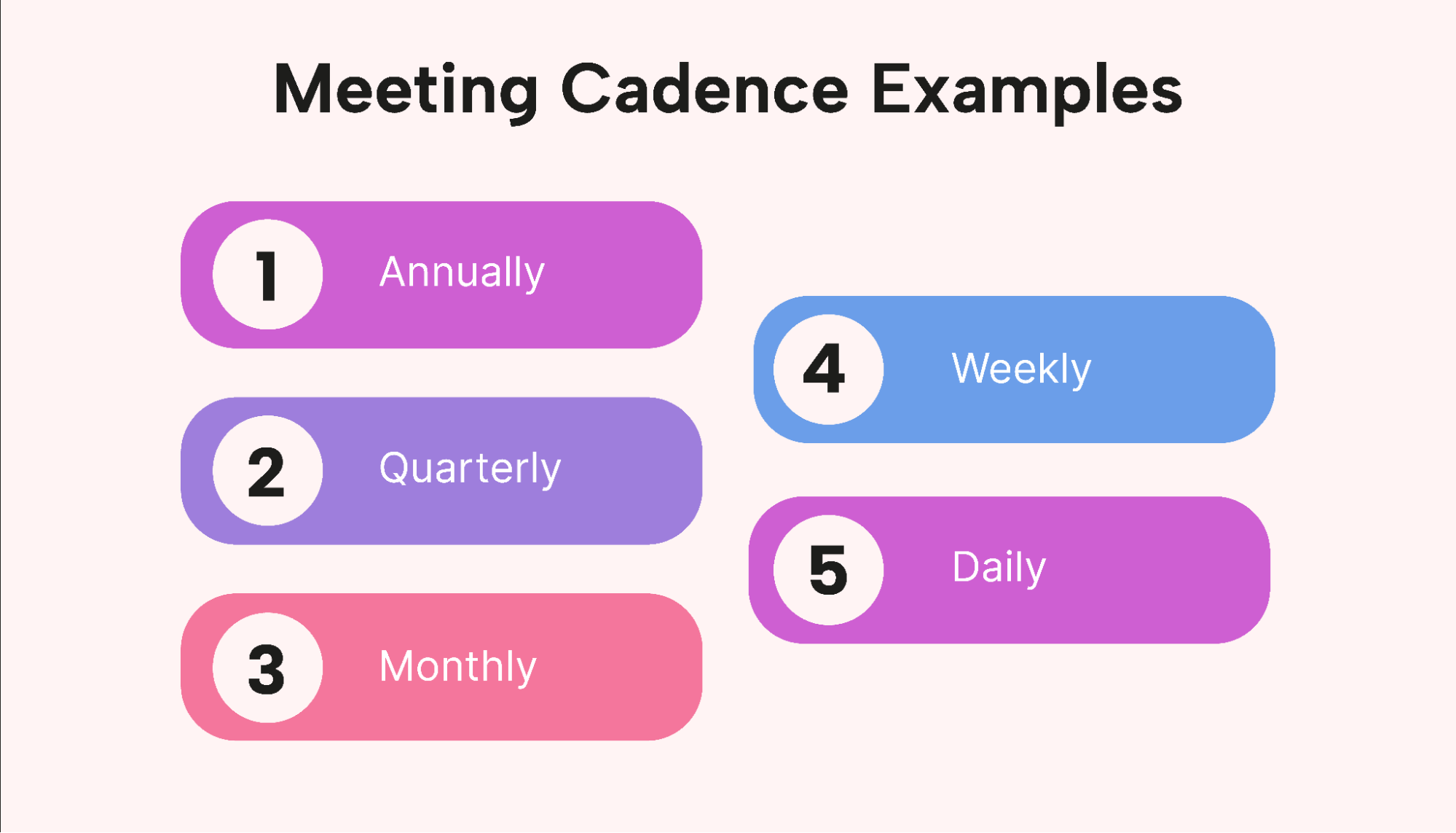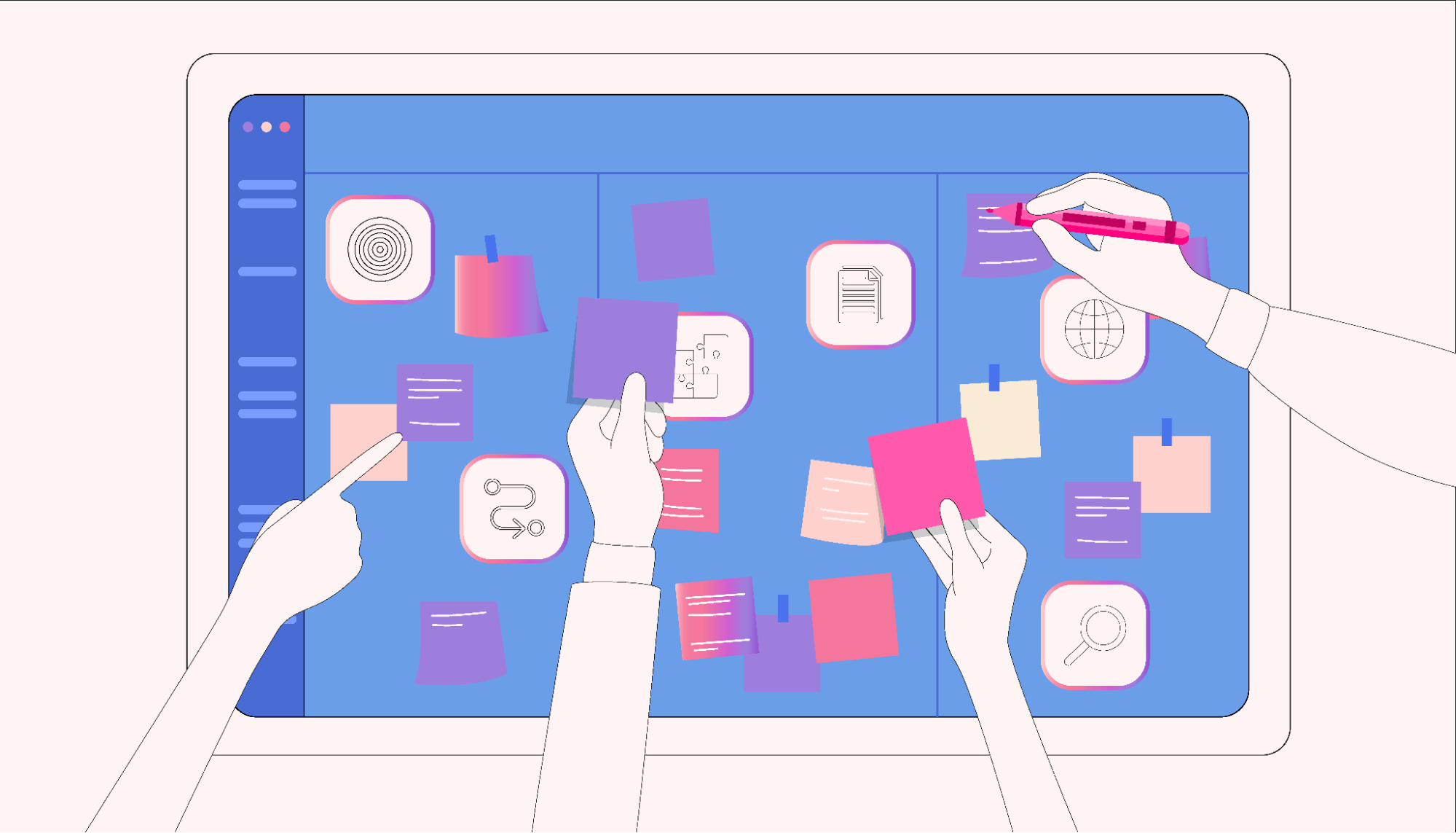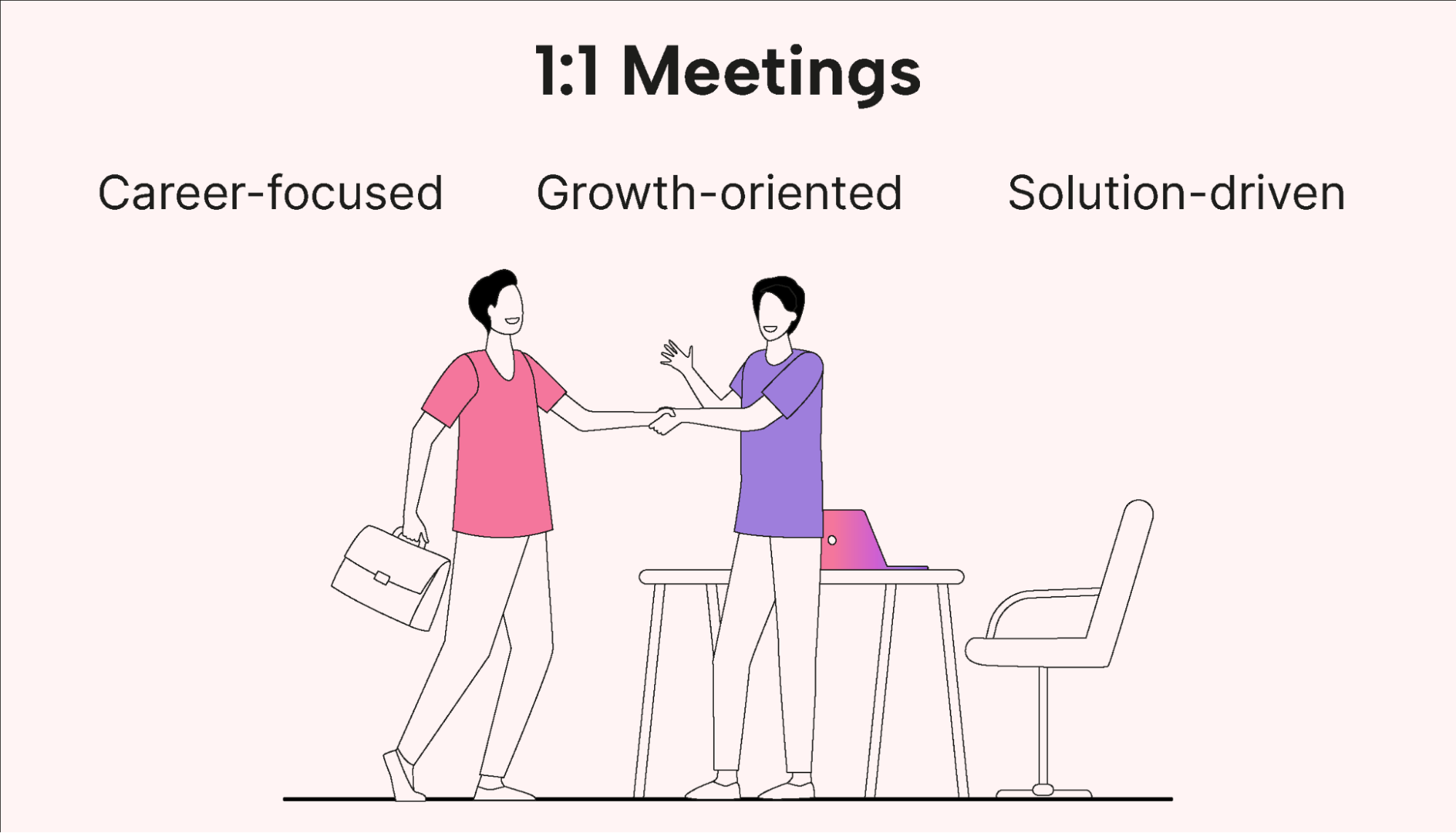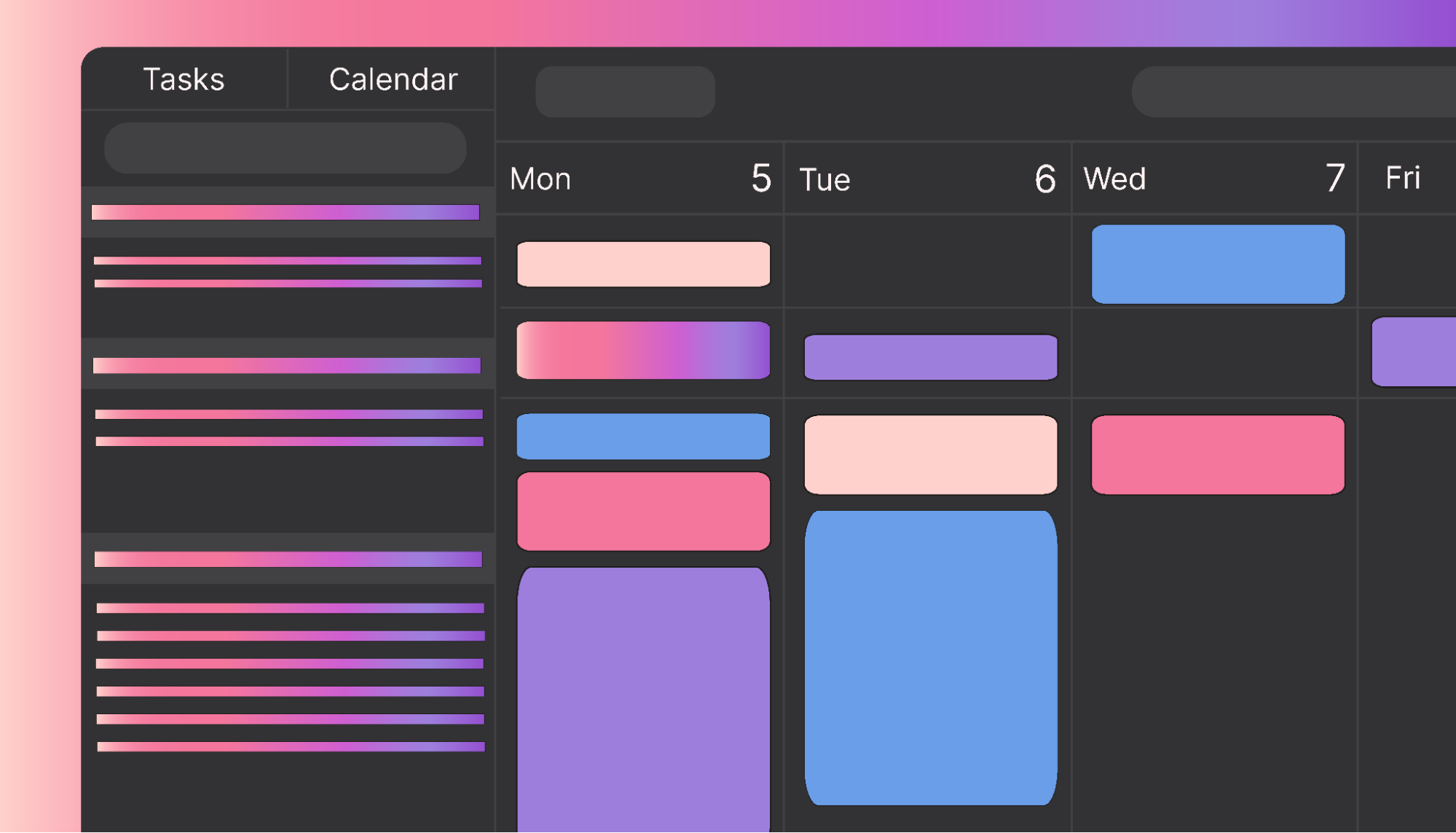Are you struggling to find time to meet with your team?
Are ad hoc meetings throwing off your productivity?
If so, then it might be time to establish a meeting cadence in your workplace. With regular, predictable meetings, participants can plan and prepare for every conversation.
In this post, we explore meeting cadence and how you can use it to support more productive meetings.
What is a meeting cadence?
A meeting cadence refers to the rhythm and pattern of regularly scheduled meetings.
In the workplace, meeting cadence refers to organizational, team, project, or any other type of meeting that’s scheduled repeatedly. It also includes how long the meeting is planned for and where it is held.
Meeting cadence provides managers and employees with consistent opportunities to present and gather information, provide feedback, and collaborate on systems, projects, and deadlines.
Why is it important to establish meeting cadence?
Setting a recurring schedule ensures that meetings are scheduled purposefully, with a clear agenda, task items, and goals.
When meetings are planned continually, the team members better understand the mission, project, and task items. Teamwork is improved with a regular rhythm, as members know when and where they will meet.
Meetings with too large of an interval between them leave employees feeling out of the loop and uncertain about the next steps. Too few meetings also reduce opportunities for collaboration, team-building, and problem-solving.
Too many meetings have their share of problems, too. Employees spend an average of 18 hours per week in meetings and report that 30% of them could be more productive. People who feel they are wasting valuable time in meetings they don’t need to attend often become frustrated.
Meeting cadence also reduces the likelihood of too many unplanned or sporadic meetings being scheduled — though the odd spontaneous meeting can be necessary to address a particularly pressing need.
Employees demonstrate greater engagement, productivity, and job satisfaction when they attend the right meetings at the right times. In fact, about 84% feel their work productivity would improve if they only participated in essential meetings.
Now that you know why meeting cadence is important, let’s look at some examples.
Examples of meeting cadence
Meeting cadence ranges from annually scheduled events to daily meet-ups, depending on the type of meeting and the needs of the employees, managers, and organization as a whole.
 |
Meetings with a lengthier cadence tend to have longer timeframes than those that occur more frequently.
Annually
An annual meeting cadence is typically held during the same month every year. The meeting length depends on the objective.
Here are some examples:
- End-of-year reviews: The goal of end-of-year reviews is to report to shareholders on the overall business performance, goal progress, and profitability. Identifying new goals and objectives may also be covered.
End-of-year reviews typically run from 90 to 120 minutes.
- Employee-based events: These events may include company retreats or get-togethers focused on team-building or celebrations of business achievements.
They may last one or more days.
- Employee performance evaluations or reviews: These types of reviews can also follow an annual meeting cadence.
Depending on the employee and the company, employee reviews may last up to an hour.
Quarterly
A quarterly meeting cadence occurs four times yearly or every three months. If your business follows the fiscal quarterly calendar, then Q1 will cover January to March, Q2 April to June, and so on.
Quarterly meetings run 60 to 90 minutes and often include the following:
- Business reviews between the company and the customer: The customer has a regular chance to review the company’s performance. You also have an opportunity to address customer satisfaction issues more proactively.
- Quarterly board meetings: These meetings give members timely access to information without the need to meet too often.

- Planning and brainstorming sessions: These sessions are held for the purpose of determining new project ideas or company goals.
Monthly
Monthly meeting cadence is intended for teams who need to check in with each other fairly often. Each of these meetings typically lasts about 60 minutes.
Here are some examples of meetings that are typically held monthly:
- All-hands meetings: Also referred to as town hall meetings, these sessions unite everyone in the company and allow upper management to inform all employees of updates and progress toward objectives.
- Committee meetings: These are scheduled monthly to keep members apprised of current issues and events. Popular workplace committee meetings include safety, social, and budgetary types.
- Management meetings: All the managers in the company come together to ensure everyone is on the same page.
- Employee 1:1 meetings: These sessions between one employee and one manager are held so that each person aligns regarding the employee’s career and goal progression.

- Project update meetings: These may occur monthly, as well, depending on the size and scope of the project involved.
Weekly
Plan weekly meetings when team members must be informed and updated consistently. These meetings typically range from 30 to 60 minutes, depending on their objectives.
Here are some examples of when weekly meetings are used:
- Weekly team meetings: These sessions keep members connected, engaged, and collaborative as they work toward a common goal.
- Project meetings: These meetings allow members to report on progress toward goals, solve problems, and determine the next steps.
Meeting more frequently typically keeps projects moving smoothly and members on track with action items and objectives.
- Leadership meetings: Depending on the organization’s size, it may hold more frequent leadership meetings.
Using a weekly schedule template to identify appropriate meeting times can be a game changer. With Motion, you can schedule out weeks in advance and inform team members immediately of changes and updates.
Daily
Daily meeting cadence is intended to be short and sweet updates — typically 5 to 15 minutes in length. The goal is for quick checks, updates, and reports.
Here are some examples:
- Daily stand-up meetings: These provide quick updates for team members.
 |
If you want to ensure these meetings are short and target the objective, gather in a consistent location where attendees can stand.
If your company uses the Agile system, daily meetings focus on reporting progress and identifying roadblocks.
- Daily check-ins: These provide quick updates and progress reports.
- Daily huddles: Plan for 15 to 20 minutes for these sessions so employees can report on their progress and align their focus for the day.
Find the right cadence for your meetings
Before you initiate meeting cadence, reflect on recent meetings and answer the following questions:
1. Were the right participants invited?
Check your attendance list and determine who needed to be there. Meetings with too many people can be inefficient and disruptive.
2. Was the target or goal of the meeting achieved?
Find out whether the meeting met its stated targets, goals, or objectives. If not, investigate whether the agenda was sufficient.
3. Was the meeting length sufficient to cover the objectives?
A meeting that is too short may lead to the need for another, pushing deadlines back. On the other hand, overlong meetings affect productivity and keep workers from their other responsibilities.
4. Was there adequate notification and follow-through?
Check with the participants to determine whether they had enough notification for a scheduled meeting and whether they were given the information they were promised after the meeting.
Answering these four questions will go a long way toward helping you find the right cadence for your company.
And don’t forget the added benefits of schedule-making software. Motion helps you craft schedules with ease through its innovative calendar feature. Once your meetings are scheduled, you can add accompanying tasks and deadlines. Motion even alerts you if your project is getting off track so you can get back on your intended path quickly.
Tips for determining a meeting cadence
Here is our advice for determining a meeting cadence that works:
1. Determine the meeting’s purpose
The scheduled meeting should have an identifiable purpose before it’s put on the calendar.
Set a clear agenda with a list of topics and the estimated time needed for the review. Identify who is responsible for any action items, how progress will be determined, and the type of follow-through that will be needed after the meeting.
Send out the agenda a day or two ahead of time to give participants time to prepare.
Team members thrive when managers communicate effectively.
 |
Providing a written agenda communicates the meeting intent, along with the invitation itself. Be consistent with your verbal and non-verbal messaging before, during, and after the meeting to stay on track.
Once you identify the purpose, you’ll be ready to determine who should attend.
2. Identify the participants
Determine the necessary participants. Then, ensure that the invitees understand exactly why they have been invited and whether their attendance is optional.
Clarify member accountability if some individuals will be unavailable. Determine who will follow up with them and how they can access the information discussed during the meeting.
Identify the roles and responsibilities of each member before, during, and after the meeting. For instance:
- Notify the participants of any information they are expected to bring or prepare.
- Assign participants roles during the meeting, such as notetaker, timekeeper, and facilitator.
- State how the information will be disseminated following the meeting and who will be responsible.
Now it’s time to get your meeting cadence scheduled.
3. Get the meetings scheduled — but be prepared to revise them
An effective meeting cadence may take some time to develop.
 |
Determine the initial frequency of your new cadence by answering the following questions:
- What is the minimum number of meetings necessary to meet the project’s goals?
- How often must members participate to receive updates or keep the project on track?
- Do all team members need to attend the meeting every time? If not, how can they participate?
- Would this meeting benefit from a flexible arrangement, such as asynchronous attendance?
Once you’ve held a few meetings, gather feedback from your team members and make any necessary adjustments.
Establish a smooth meeting cadence with Motion
Setting the optimal meeting cadence offers benefits for employees, managers, and the business as a whole.
Start by identifying the purpose of the meetings and who the participants will be. Get the meetings scheduled and gather feedback. Refine and revise them as needed.
If you’re ready to make the process even simpler, invest in Motion.
Motion’s AI Meeting Assistant allows you to easily schedule meetings that matter. Create the perfect template based on your meeting type, reuse it, and send it out automatically. With Motion, you’ll create the ideal meeting cadence in minutes.
Contact Motion today to get started with your free 7-day trial.





